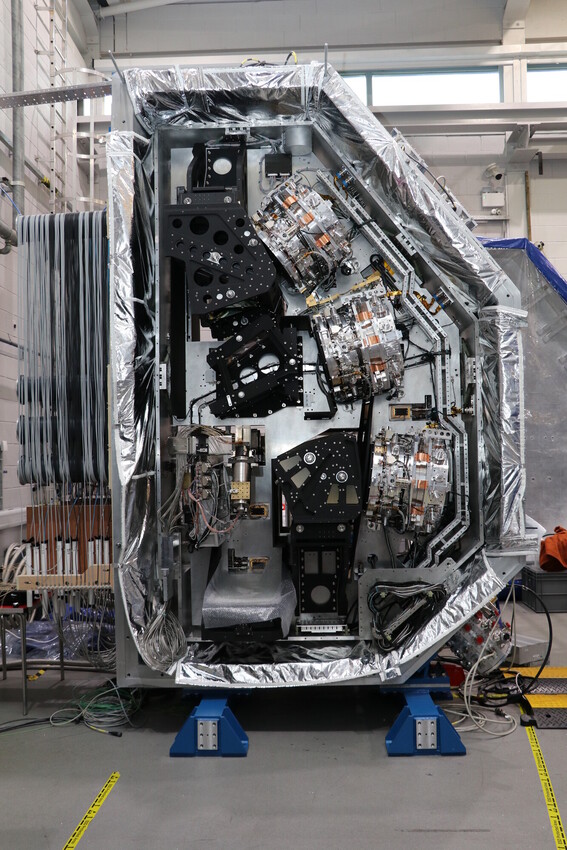 MOONS (the Multi-Object Optical and Near-infrared Spectrograph) is a next generation astronomy instrument designed for the Very Large Telescope (VLT) in Chile. It will be the first instrument to simultaneously provide optical to near-infrared spectra for 1000 objects.
MOONS (the Multi-Object Optical and Near-infrared Spectrograph) is a next generation astronomy instrument designed for the Very Large Telescope (VLT) in Chile. It will be the first instrument to simultaneously provide optical to near-infrared spectra for 1000 objects.
Now MOONS has reached a critical moment on its road to Chile. The fully populated instrument has been cooled down to operating temperatures in the UK ATC labs where it is being assembled and tested by the team. Because it operates in the infrared MOONS has to be incredibly cold to work, otherwise the heat of the instrument would blind its sensors.
This is the first time that the MOONS spectrograph with all six cameras, all the science detectors, and all the components in place is operated in conjunction with the rotating front end that holds the ~1000 robotic fibre positioners.
The cooling process of the spectrograph takes approximately 48 hours. Five tons of liquid nitrogen is required to cool the optical bench to 130 Kelvin (approximately -140 Celsius) and the detectors to 40 Kelvin (-230 Celsius).
This stage offers scientists, astronomers and engineers the opportunity to fully test the instrument as it would operate on the VLT in Chile. The team deploys the MOONS software in the control room in Edinburgh in the exact set up the instrument will have at the VLT control room in Paranal, Chile.
Oscar Gonzalez, Senior Project Scientist at UK ATC and Deputy Principal Investigator of MOONS, said: “This marks an incredibly important stage. Cooling the spectrograph with all its components in place and testing the orchestration of all its operational functions. It is like seeing MOONS becoming alive! Bringing together more than ten years of work by our large international consortium. We can now demonstrate the final performance tests before it begins its journey to Chile."
Find out more about MOONS.
